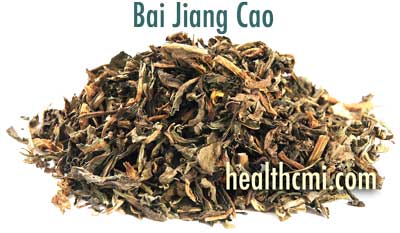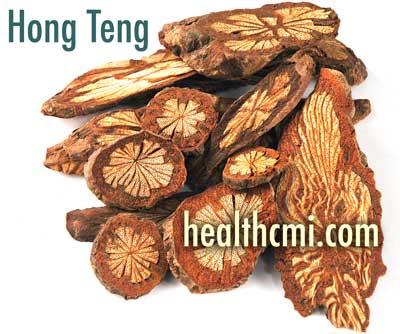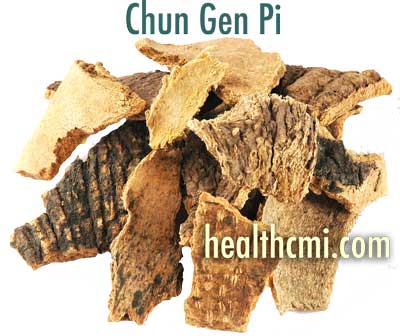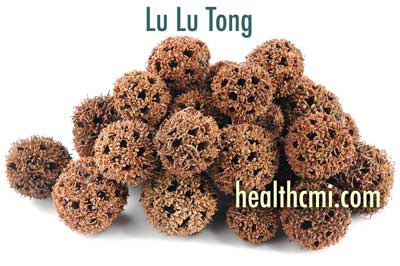PID Treatments
Several herbs and acupuncture points are particularly helpful in the treatment of Pelvic Inflammatory Disease (PID). In a recent HealthCMi online acupuncture CEU webinar, we covered several herbs that invigorate blood circulation and clear heat & toxins. Three standout herbs are Bai Jiang Cao, Hong Teng and Lu Lu Tong. They have the ability to address the infectious lingering pathogenic factors associated with PID as well as the concomitant Qi and Blood stasis. Let's take a look...
Pelvic Inflammatory Disease is the inflammation of the female pelvic organs or tissues. Often this is due to an ascending intravaginal infection, however, it may also be caused by endogenous factors such as Liver Qi stagnation transforming into Fire and Heat in the Blood. External pernicious influences include gonorrhea, chlamydia and a variety of other infectious microorganism infections. In Traditional Chinese Medicine (TCM), PID is the invasion of damp-heat and toxins causing Blood stasis in the lower jiao (burner). Chronic cases are complicated by a complex mix of cold and deficiency syndromes such as Spleen Qi deficiency, Kidney Yang deficiency and cold stagnation in the Liver Channel. Common presentations of PID are cervicitis, endometritis, salpingitis, oophoritis and broad ligament infections.
The Healthcare Medicine Institute (HealthCMi) offers several acupuncture continuing education courses on the treatment of pelvic inflammatory disease. The online courses are in video and written format. The following is a quick link to one course on the topic of PID treatment with acupuncture and herbs:
PID often causes inflammation of the fallopian tubes (salpingitis) and ovarian obstructions and adhesions. This is often due to congealed exudate lingering from the acute phase of the infectious aspect of PID. The predominant symptoms for all cases of PID are lower abdominal pain and leukorrhea. The acute stage often presents as a clinical emergency requiring hospitalization, however, some cases are completely asymptomatic in the initial acute stage. Chlamydia infections, for example, may be completely asymptomatic.
The chronic stage involves less severe symptoms such as the Yangming or Qi level heat often occurring in the acute stage. Often, there is lingering Ying level heat or Taiyin stage involvement. Blood stasis in the form of scar tissue from PID may lead to infertility and ectopic pregnancies. Over 750,000 women suffer from PID every year in the USA and approximately 150 women die every year in the USA due to either PID or its complications.
Biomedical tests include cultures, smear, ultrasonography and laparoscopy. Biomedical treatments include antibiotics, surgical drainage of abscesses and surgical removal of affected tissues. Chronic repeated episodes of PID are often treated with multiple exploratory surgical procedures.
In the acupuncture clinic, we often distinguish chronic PID from endometriosis by the character of the pain. Often, PID presents with severe pain in the acute stage followed by a lower level of pain in the chronic stage. Endometriosis pain worsens over time and worsens towards the end of each menstrual cycle. Leukorrhea is more common in PID and PID pain flare-ups may precede the menstrual cycle whereas this is less common with endometriosis.
The Daimai (Dai Vessel, Belt Channel, Girdling Channel), Chong (Penetrating Vessel) and Ren (Conception Vessel) are always disturbed in cases of PID. Also, local channels are involved, particularly the Liver and Stomach channels. Let’s take a look at three herbs that treat both the Damp-Heat and toxins and the Blood stasis involved in PID. To learn more beyond this blog, take the PID anytime courses or live webinars at HealthCMi.

Herbs that clear heat and toxins, regulate Qi and invigorate Blood address the central disharmonies found in PID. Bai Jiang Cao is a standout because it clears heat & toxins, drains pus & abscesses and removes Blood stasis. Bai Jiang Cao’s ability to move the Blood helps to relieve the pain caused by PID. This is why Bai Jiang Cao is also valuable in the treatment of appendicitis, peritonitis, post-partum abdominal pain, dysmenorrhea and inflammation of the intestines. Bai Jiang Cao enters the Large Intestine, Liver and Stomach channels and is cold, pungent and bitter.
Lu Lu Tong, translated as all roads open, is an important herb for the treatment of PID because it moves Qi and Blood in the channels and collaterals. Lu Lu Tong is also helpful because it promotes urination to drain the dampness and expels wind. One caveat, Lu Lu Tong should not be used for pregnant women due to its Blood invigorating properties. Lu Lu Tong is neutral, bitter and enters the Liver and Stomach channels. Lu Lu Tong helps to relieve lower abdominal pain and back pain due to PID from its ability to move Qi and Blood. Its ability to move Qi and Blood and to promote urination makes Lu Lu Tong an excellent choice for treating fallopian tube blockages and pelvic region adhesions due to damp stagnation and Blood stagnation. Lu Lu Tong is appropriate for use in both acute and chronic PID. Lu Lu Tong also treats joint pain and traumatic injuries. Lu Lu Tong has a general anti-inflammatory effect and expels wind. As a result, Lu Lu Tong treats skin and nasal allergies. Lu Lu Tong moves the Qi and Blood and enters the Liver and Stomach channels making this herb also helpful in resolving post-surgical adhesions and for the treatment of endometriosis in addition to its ability to treat PID.

Hong Teng, translated as red vine, also goes by the name of Da Xue Teng. It also clears heat & toxins and dispels Blood stasis. It is a very valuable herb in the treatment of multiple presentations of PID. Hong Teng is neutral and bitter and enters the Large Intestine and Liver channels. Hong Teng relieves Blood stasis related pain and is an important herb for the treatment of intestinal abscesses and abscesses due to PID because it clears heat & toxins and invigorates blood. Hong Teng is also valuable in the treatment of appendicitis, injuries, joint pain and dysmenorrhea.

Menorrhagia and other forms of abnormal uterine bleeding are common complications resulting from PID. Leukorrhea is the most common symptom along with lower abdominal pain. As a result, it is appropriate to go ahead and mention one more very important herb. The presence of leukorrhea is why Chun Gen Pi (Chun Pi) is an important herb for the treatment of PID. Chun Pi is cold, bitter and astringent and enters the Large Intestine, Stomach and Liver Channels. Chun Pi is an astringent category herb that clears heat and dries dampness. Chun Pi also stops bleeding. Chun Pi is an excellent choice for the treatment of red, yellow and white belt leukorrhea because it clears heat and dries dampness while at the same time it exerts an astringent function. Chun Pi is therefore applicable for the treatment of many types of uterine bleeding both for excess and deficiency including Yin deficiency and Damp-Heat as causative factors. Another reason why Chun Pi is an excellent choice for the treatment of PID is that it has an anti-fungal and anti-parasitic function. This addresses the polymicrobial nature of some forms of PID. Chun Pi is also commonly used for the treatment of dysentery and chronic diarrhea.
To learn more about acupuncture points, channel theory, differential diagnostics, lab tests, factors of susceptibility and herbal formulas for the treatment of PID, take a look at HealthCMi acupuncture CEU courses. HealthCMi features both anytime CEU courses for immediate download and live webinars on the topic. Simply purchase and download the course materials, take the online quiz and download your certificate of completion for acupuncture CEU credit. Courses are in both video and eBook formats. Take a look at a sample video course below.
Course Video Sample of Introduction and Biomedicine Section



